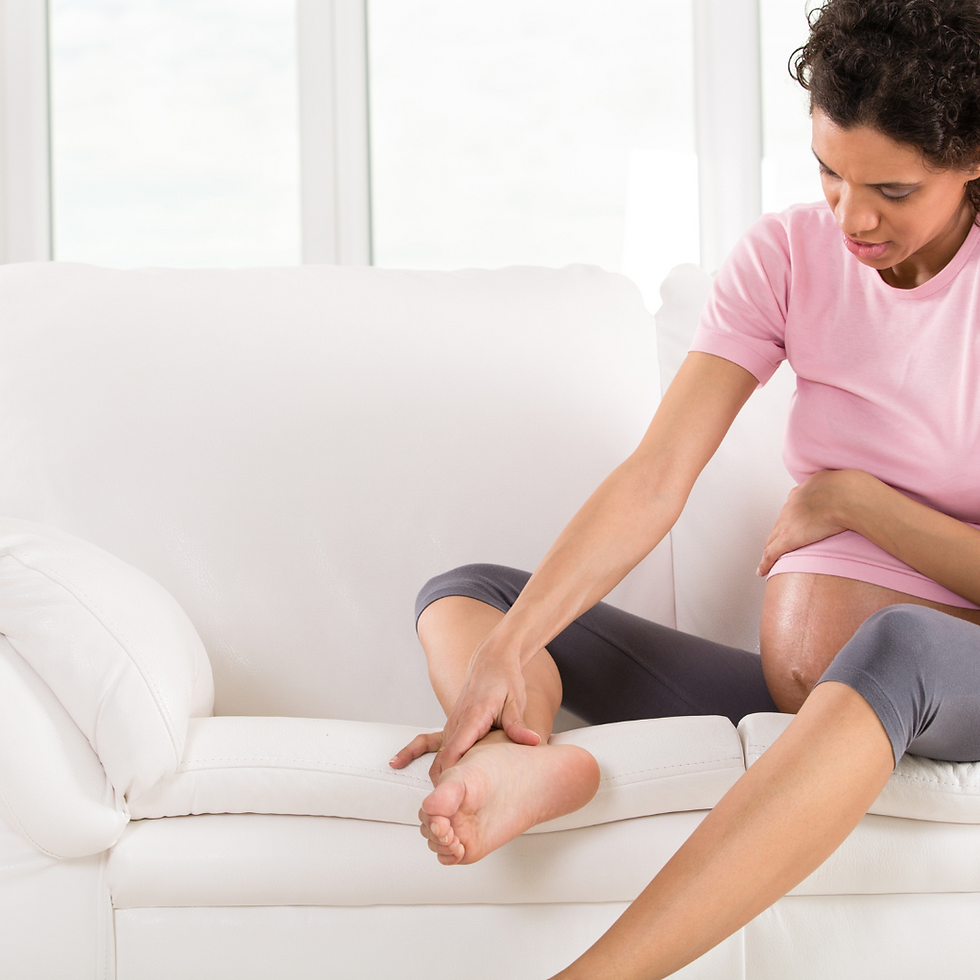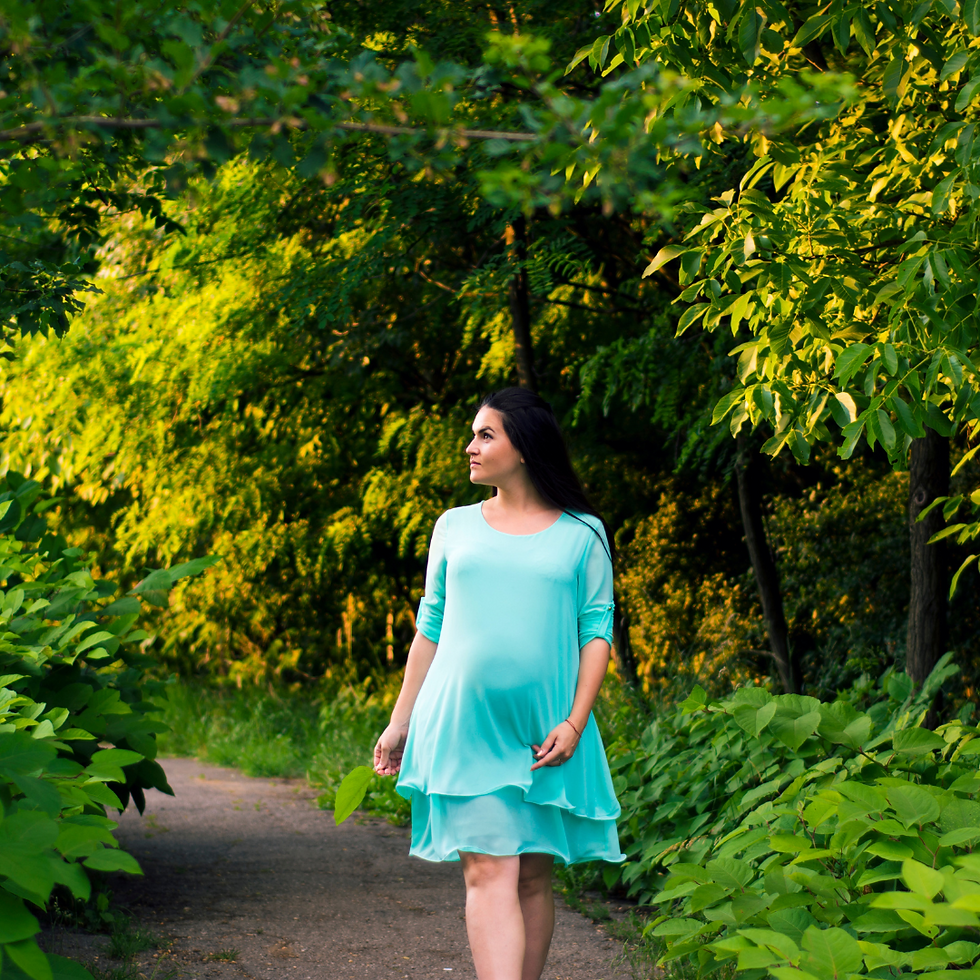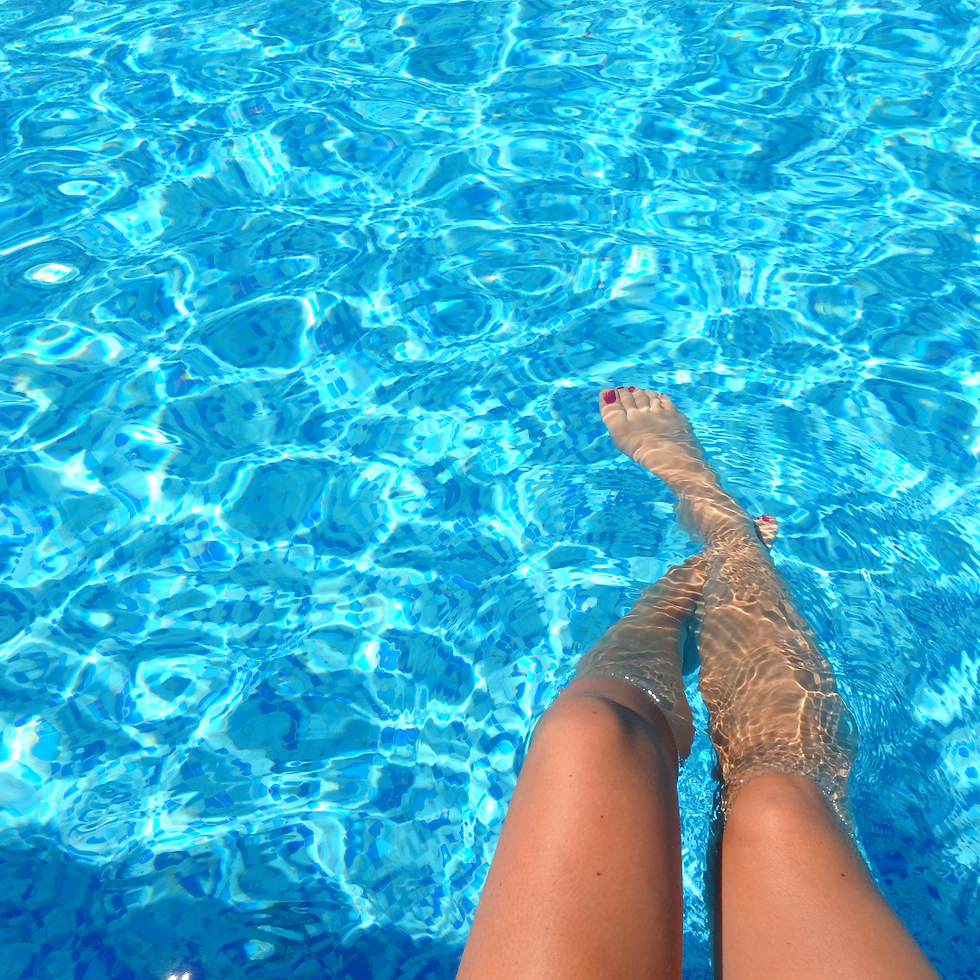
As your pregnancy progresses you might start to notice some swelling in your feet, ankles, fingers or hands. Around three quarters or women and birthing people will experience some swelling during their pregnancy so if this you, you are not alone!
During pregnancy you have more fluid in your body and you are probably a bit (or a lot) less active than you were. Gravity helps that extra fluid to pool in the feet or hands. This extra fluid swelling is called oedema. Whilst the swelling in the ankles and feet is what normally gets the attention many people will also notice their rings are a bit tighter and prefer to remove them while they can.
There are times when swelling can be a sign of serious complications which need attention. Pre-eclampsia needs urgent review by your midwife or doctor. It is usually detected if you have raised blood pressure and protein in your urine but can also give you headaches, blurred vision and sudden swelling of feet, hands or face.
Swelling can also be a sign of a blood clot. If you have swelling in one leg, if the swollen area is red or hot to touch, speak to your midwife or doctor. Blood clots are more common in pregnancy and some women are at higher risk and may be offered some preventative treatments.
Assuming the swelling is not anything more concerning, what can you do about it?

Some people do just get swelling for no clear reason and for others you know that something has triggered it. That could be being on your feet for long periods or due to heat. When the weather warms up I definitely see more people in class with swollen feet and ankles.
First thing to try is good old putting your feet up. Elevating your feet and ankles allows the fluid to drain back up your legs or prevents it pooling your feet in the first place. If you are sitting at a desk all day pop something underneath to rest your feet up on. If you are standing a lot during your day and it is causing problems look for ways to take a break and put your feet up. Certainly in the evenings spend time with your legs elevated. In most cases swelling goes away overnight but you can help it by lifting your mattress or base of your bed a bit to encourage the fluid to flow back up your body. You could use cushions/pillows to prop your feet up in bed but it becomes uncomfortable quite quickly when you need to move around so lifting the bed or mattress can work better.
You probably are sleeping on your side as much as possible but it will also help with swelling. Alleviating the pressure on your main veins and improving blood flow will help keep the fluid in the veins rather than it heading out to swell your tissues.

Make sure you are well hydrated. I know you are trying to manage what seems excess fluid but having a well hydrated body will help keep everything in the right balance. And as swelling is often worse in the heat it’s always good to make sure you drink enough.
Spend some time with your feet in cool water. It really can help. Get comfy, get a bowl of water at a cool temperature you can manage and let your feet cool down. No need to go for ice water or anything special just a temperature that feels cool but comfortable to you. If you are likely to by a paddling pool for your baby next year you might just buy one now and use it yourself, even if you just sit in your garden chair with your feet in!

Keep active. We already thought about putting your feet to let gravity help you but doing some exercise throughout your day will help too. This fluid isn’t pumped round the body like blood is, it relies on the movements of your muscles to move it so walking can help reduce swelling. You might also enjoy swimming which can be really beneficial as the water pressure pushes fluid back into the veins and you can then pee it out. If you are able to, join a pregnancy yoga class. So many benefits, but the gentle flowing movements will help you and I can always include movement specifically to help with swelling.
Try a massage. Massage to draw fluid back up the legs starting at the ankles and gradually working higher up the legs. If you can’t reach, someone can help you! The bonus of a massage is all the lovely feel good endorphins.
Avoid tight fitting socks and shoes. It might sound obvious but make some sensible choices. If your socks leave ridges they are probably too tight. If you are swelling in the heat you might not need socks and you can choose some comfy shoes. This is definitely the time to dress for comfort not style. Sandals and flip flops will not only feel comfier on your feet but you might find they are easier to get on as your bump grows and your feet are out of reach.

You might also find your shoes feeling tighter because the relaxin in your body (which relaxes the ligaments to allow your body to change to accommodate your baby and create space for birth) is also relaxing ligaments in your feet. Some people find their shoe size increases in pregnancy; and occasionally it stays a little larger after baby arrives too. Just as you buy maternity clothes to accommodate your growing bump you might need some maternity shoes as well.
If you are really struggling with swelling your midwife or doctor might also suggest you try support stockings. This might be during your pregnancy or when you are leaving hospital after your baby is born – some women experience swelling after the birth too, or it just takes time to go away.
If you are struggling with swelling at the moment I really hope you find something that helps you and if you have any top tips to share with other pregnant folk please do let me know.
My pregnancy yoga classes are in Pinner, if you want to join us you would be very welcome https://www.bethowen.uk/birthing
If you want to know more about how classes help you https://www.bethowen.uk/post/the-unexpected-bonuses-of-birthing-classes
Beth x


コメント